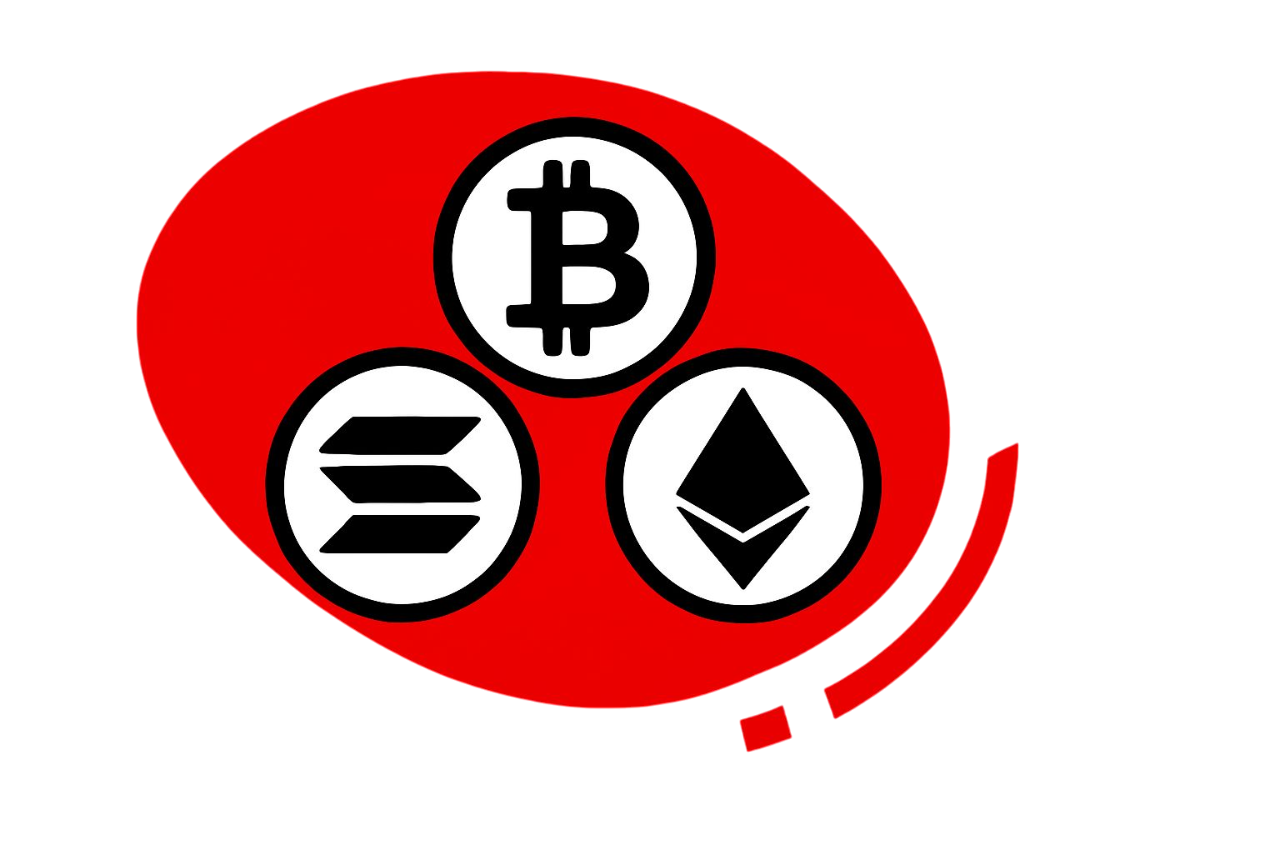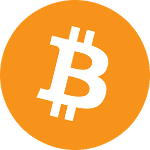4.3 Overview of Major Cryptocurrencies

The cryptocurrency ecosystem is led by a small number of major digital assets that serve as technological pioneers and economic anchors. These assets are typically distinguished by their market capitalization, adoption rates, technological innovation, and influence on the broader blockchain industry.
Here’s a look at some of the most prominent cryptocurrencies as of June 2025, based on market capitalization, adoption, and impact:
Bitcoin (BTC)

Launch Year: 2009
Founder: Satoshi Nakamoto (pseudonym)
Blockchain Type: Proof of Work (PoW)
Ticker Symbol: BTC
Maximum Supply: 21 million
Overview:
Bitcoin is the original cryptocurrency and remains the largest by market capitalization. Often referred to as "digital gold," Bitcoin is designed to be a decentralized, peer-to-peer payment network with a limited supply of 21 million coins. It offers censorship resistance, borderless transfers, and security through its robust network of miners.
Primary Use Cases:
- Store of value and hedge against inflation. Often compared to gold for its scarcity and resistance to inflation
- Cross-border remittances
- Medium of exchange in some jurisdictions
Notable Characteristics:
- Immutable and decentralized: Maintained by a global network of nodes and miners
- Slow transaction speed (~4.5-7 TPS)
- High energy consumption due to PoW
- Limited programmability (no smart contracts)
- Security: Protected by the highest total network hash rate of any blockchain
Ethereum (ETH)

Launch Year: 2015
Founders: Vitalik Buterin and others (including Gavin Wood, Joseph Lubin, etc.)
Blockchain Type: Proof of Stake (PoS)
Ticker Symbol: ETH
Maximum Supply: No fixed maximum supply; Ethereum is inflationary but incorporates mechanisms that burn a portion of fees
Overview:
Ethereum introduced the concept of smart contracts—self-executing agreements written in code. This turned the blockchain into a global, decentralized computing platform. It powers thousands of decentralized applications (dApps), including DeFi protocols, non-fungible tokens (NFT) marketplaces, and DAO platforms. Since its transition from Proof of Work to Proof of Stake (known as The Merge) in September 2022, Ethereum has greatly decreased its energy consumption and moved toward more eco‑sustainable consensus.
Currently, there are about 120.7 million ETH in circulation. New ETH is continuously issued via staking rewards, but Ethereum also includes a fee burning mechanism (EIP‑1559) that permanently removes part of transaction fees from supply.
Primary Use Cases:
- Decentralized applications (DeFi, NFTs, DAOs)
- Token issuance: ERC-20 (fungible tokens), ERC-721 (non‑fungible tokens)
- Smart contract execution
Notable Characteristics:
- Transitioned from PoW to PoS (The Merge) for better scalability and energy efficiency
- Developer ecosystem and composability: Among the largest developer communities in crypto. Many projects build interoperably using Ethereum’s tooling, standards, and ecosystem
- Layer 2 scaling solutions: To address congestion, cost, and throughput, Ethereum leverages layer‑2 rollups (e.g. Arbitrum, Optimism) and evolving protocol upgrades
Ripple (XRP)

Launch Year: 2012
Developed By: Ripple Labs
Blockchain Type: The XRP Ledger (XRPL)
Ticker Symbol: XRP
Maximum Supply: 100 billion XRP (pre‑minted at genesis); fixed supply
Overview:
XRP is the native asset of the XRP Ledger (XRPL), designed for fast, low‑cost, cross‑border payments and settlement. Ripple Labs develops and supports infrastructure (e.g. RippleNet) that integrates XRP and XRPL with financial institutions. Transactions on XRPL settle in seconds, and the ledger includes built‑in features (e.g. a decentralized exchange, pathfinding) to facilitate liquidity and value movement.
A substantial portion of XRP was placed into escrow by Ripple to provide predictable supply release over time (up to 1 billion XRP per month from escrow), to manage liquidity and transparency.
Primary Use Cases:
- Cross-border settlements between banks and payment providers—enabling faster and more efficient international transfers
- On-demand liquidity (ODL) / bridge currency—using XRP to bridge different fiat currencies, removing or reducing the need for prefunded nostro/vostro accounts
- Liquidity provision in trading / decentralized exchange (DEX) within the XRPL—enabling token issuance, IOUs, and exchanging of assets on‑ledger
Notable Characteristics:
- Fast transaction settlement (3-5 seconds)
- Extremely low transaction cost—typically around 0.00001 XRP per transaction, or similar, which amounts to a fraction of a cent
- Fixed Supply and Escrow Mechanism: Total supply is fixed at 100B XRP; a large portion (55B) is escrowed and released in scheduled or protocol‑controlled amounts
- Enterprise and Regulatory Adoption: Ripple has entered partnerships (e.g. with UAE banks, fintechs) to integrate its payments infrastructure in regulated environments; Ripple holds licensing in some jurisdictions (such as DFSA in Dubai) to operate cross‑border payments infrastructure
Binance Coin (BNB)

Launch Year: 2017
Founder: Binance Exchange
Blockchain Type: Delegated Proof of Stake (on BNB Smart Chain)
Ticker Symbol: BNB
Maximum Supply: 200 million BNB maximum; circulating supply is lower and decreasing via regular burns
Overview:
BNB started in 2017 as a utility token for the Binance exchange — for example for fee discounts, trading, etc. Over time, it has become the core asset of the BNB Chain (formerly Binance Smart Chain + Beacon Chain) ecosystem. The token is used for gas / transaction fees, staking (validator participation), governance, and other uses across DeFi, token launches, NFTs, payments, etc.
The BNB Chain infrastructure has evolved to support decentralized participation: holders can stake BNB to participate in validators (delegated model), vote on certain governance proposals, etc.
To maintain long‑term value, Binance performs periodic token burns (quarterly burns / auto burns) to reduce the supply. Over time this helps make BNB partially deflationary or at least supply‑constrained.
Primary Use Cases:
- Receiving discounts on Binance’s exchange fees when using BNB
- Paying transaction (“gas”) fees on BNB Chain / BNB Smart Chain
- Participation in token launches / initial offerings, including via Binance Launchpad / Launchpool etc.
- Use across DeFi protocols (staking, liquidity provision, yield farming) on BNB Chain
- NFTs and digital asset marketplaces built on BNB Chain; also real‑world payments/services via Binance Pay, travel, etc.
Notable Characteristics:
- High-speed and low-fee ecosystem (BSC)
- Centralized governance compared to Ethereum
- Large and growing dApp ecosystem
- Regular token burns to reduce supply
Solana (SOL)

Launch Year: 2020
Founder: Anatoly Yakovenko, Raj Gokal (and others)
Blockchain Type: Proof of History (PoH) combined with Proof of Stake (PoS)
Ticker Symbol: SOL
Maximum Supply: No fixed maximum; supply is inflationary but with mechanisms (staking rewards, partial fee burns) that moderate increases
Overview:
Solana is a high-performance blockchain optimized for speed, low latency, and low transaction costs. It introduces an innovative timestamping method called Proof of History, that assists in ordering and verifying events, enabling very high throughput. Under stress test conditions, Solana’s network has peaked at over 100,000 transactions per second (TPS) using lightweight “noop” transactions. However, for typical real‑world usage (payments, DeFi, NFTs), effective TPS is much lower, often in the order of ~1,000‑3,700 TPS, depending on the kind of transaction and network load.
The circulating supply of SOL is approximately 530‑550 million tokens (varies by source), and total supply is somewhat higher. Inflation is built into the tokenomic model, which started around 8% annual inflation, and decreases each year with the aim of approaching a long‑term steady rate (≈1.5%) as staking participation increases.
Primary Use Cases:
- Real-time trading applications
- NFT minting and marketplaces
- Scalable Web3 applications and games
Notable Characteristics:
- Ultra-low transaction fees (fractions of a cent)
- High throughput and sub-second finality
- Dynamic inflation / deflation elements: Inflation decreases over time; a portion of transaction fees is burned, which mitigates dilution
- Strong developer ecosystem: Many projects building on Solana (wallets, NFT platforms, DeFi, gaming)
Cardano (ADA)

Launch Year: 2017
Founder: Charles Hoskinson (co-founder of Ethereum)
Consensus Mechanism: Ouroboros Proof of Stake (PoS)
Ticker Symbol: ADA
Maximum Supply: 45 billion ADA
Overview:
Cardano is a research-driven blockchain platform designed for scalability, sustainability, and interoperability. Built using formal methods and peer-reviewed academic research, Cardano focuses on providing a secure and scalable infrastructure for decentralized applications and digital identity solutions, particularly in developing countries.
The consensus protocol, Ouroboros, underpins Cardano’s security and sustainability. Ouroboros is the first provably secure PoS protocol based on peer‑reviewed research. It divides time into epochs and slots; stake pools participate in block creation, and ADA holders can delegate their stakes.
Primary Use Cases:
- Smart contracts via Plutus platform
- Identity and credential verification (e.g. in education and healthcare)
- Governance and Community Funding: Project Catalyst is Cardano’s community governance mechanism, funding proposals, upgrades, and ecosystem development
- Enterprise/Use in Regulated Environments: Tokenization of assets, supply chain transparency, payments, identity systems for institutions and governments seeking compliance, low energy usage, transparency
Notable Characteristics:
- Layered / Modular Architecture: Cardano separates settlement layer (for ADA transfers) from computation/control layers (smart contracts, governance), allowing upgrades and new functionality without disrupting the base ledger
- Low-energy consumption due to PoS (Ouroboros)
- Emphasis on long-term governance and academic rigor
- Fixed Maximum Supply and Staking Incentives: Max supply of 45 billion ADA. Stake pools and delegation allow ADA holders to earn rewards; there is a mechanism to distribute ADA from reserves into active supply over time
Conclusion
Each of the major cryptocurrencies explored—Bitcoin, Ethereum, XRP, BNB, Solana, and Cardano—represents a distinct vision for how blockchain technology can shape the future. From Bitcoin’s monetary minimalism to Solana’s performance-driven design, and Cardano’s academically rigorous framework, these platforms offer varying trade-offs between scalability, decentralization, and utility.
Understanding these foundational projects is essential not just for investors and developers, but for anyone seeking to navigate the broader shift toward trustless, programmable, and inclusive financial systems. As the space matures, the most resilient cryptocurrencies will be those that balance technical innovation with real-world relevance and adaptability.
That wraps up our overview of the major cryptocurrencies, highlighting how different projects serve unique roles in the broader ecosystem.
Next, we’ll take a closer look at Stablecoins—a special category designed to offer price stability in the often volatile crypto market.

